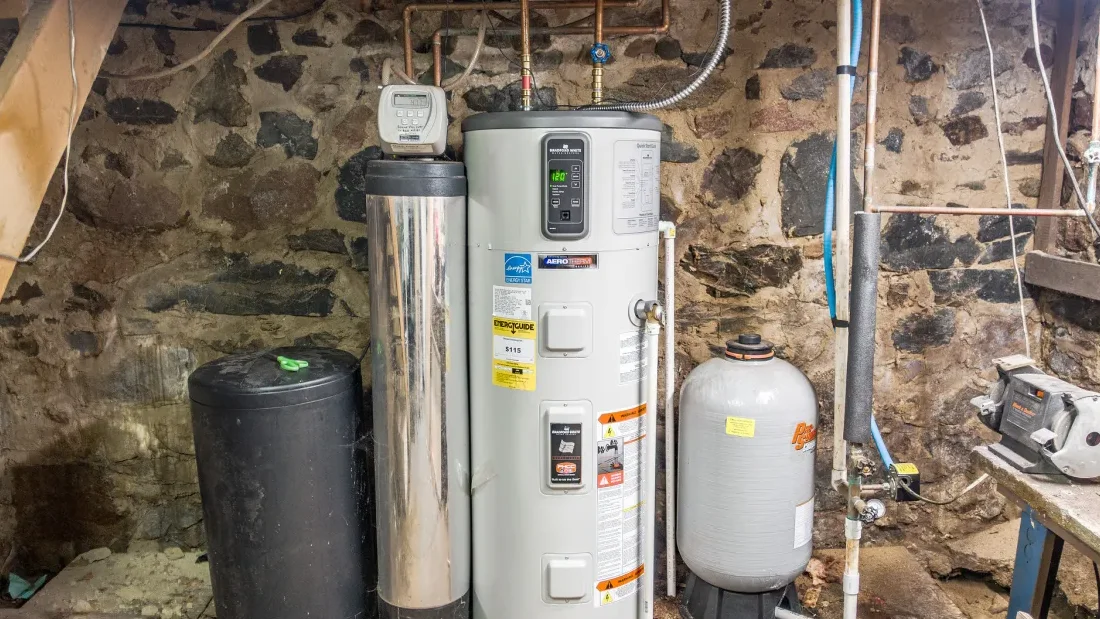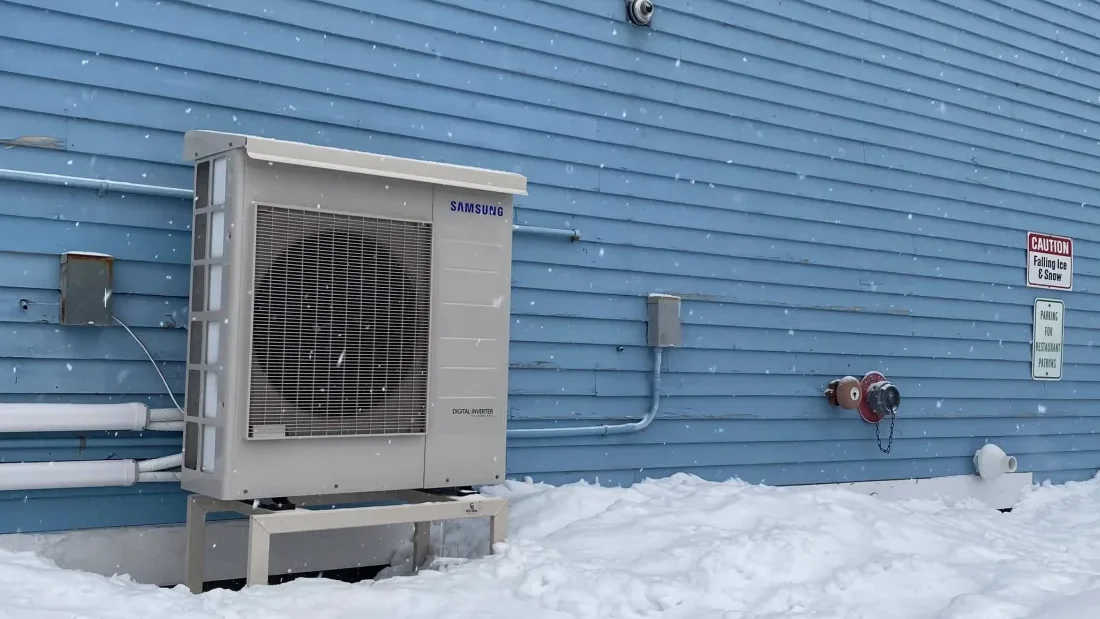
UTILITIES: S&P downgrades the credit rating of three Connecticut utilities, with executives blaming state regulators for rejecting rate increases as costs increase. (CT Insider)
ALSO: New Jersey lawmakers advance a bill that would require utilities to alert customers mid-month if their energy usage is unusually high. (New Jersey Monitor)
CLIMATE:
OVERSIGHT: New Hampshire’s consumer advocate is backing legislation to clarify the authorities of the state’s Public Utilities Commission and its recently created Department of Energy. (New Hampshire Bulletin)
WIND: A labor leader says Maine should reach out to other states to help support a deepwater port for offshore wind construction, after multiple attempts to secure federal funds have failed. (Maine Public)
ELECTRIC VEHICLES: New Jersey has surpassed 200,000 electric vehicle registrations, but an advocate says a lack of charging stations and shifting tax credits make it unlikely the state will hit its goal of 330,000 by next year. (NJ.com)
SOLAR:
COMMENTARY:

This article was originally posted by South Dakota Searchlight.
Massive data centers used for cloud computing and artificial intelligence are consuming enormous amounts of energy, and developers are eyeing South Dakota as a potential location, regulators say.
These “hyperscale data centers,” or “hyperscalers,” are designed to handle immense computing demands and are often operated by tech giants. The centers are characterized by their large size — often tens of thousands of square feet — and thousands of computer servers that require significant energy to operate.
Nick Phillips with Applied Digital in Texas, a developer of the centers, highlighted South Dakota’s appeal: a cold climate that cuts down on cooling a room full of hot servers, and abundant wind energy that’s considered one of the most cost-effective renewable energy sources, which can help keep operating costs down.
State regulators are not aware of any hyperscale data centers currently operating in South Dakota.
“There isn’t a requirement to report hyperscale data centers to the commission, so we don’t have a formal method to track that information,” said Leah Mohr with the Public Utilities Commission.
Commissioner Kristie Fiegen noted that the state’s largest proposed data center is a 50-megawatt facility in Leola.
“We don’t know what’s coming,” she said. “But the utilities are getting calls every week from people trying to see if they have the megawatts available.”
The commission recently hosted a meeting in Pierre with representatives from regional utilities, regional power grid associations and data centers. The goal was to understand the emerging demands and facilitate an information exchange.
Bob Sahr, a former public utilities commissioner and current CEO of East River Electric Cooperative in Madison, emphasized the scale of energy needed.
“We’re talking loads that eclipse some of the largest cities in South Dakota,” he said.
A single data center campus can require anywhere from 300 to 500 megawatts of electricity to operate. One megawatt can power hundreds of homes. By one estimate, there are over 1,000 hyperscalers worldwide, with the U.S. hosting just over half of them.
Ryan Long, president of Xcel Energy, headquartered in Minneapolis, illustrated the extreme nature of the demand.
“We now have, I would say, north of seven gigawatts of requests across the Xcel Energy footprint for data centers to locate in one of our eight states,” he said. “And I’ll be very frank that there’s no way that we’re going to be able to serve all of that in a reasonable amount of time.”
Protecting existing customers from potential costs or energy shortages is another shared concern. Utility representatives emphasized the need for coal and natural gas to maintain a reliable “base load” when renewable sources like wind and solar are unavailable. Arick Sears of Iowa-based MidAmerican Energy underscored the point, noting that costs for each data center should depend on how much energy it consumes.
“We need to ensure that large-scale energy users are paying their fair share,” he said.
Utilities also flagged the risk of “stranded costs,” referring to a data center ceasing operations, leaving a utility with added infrastructure to meet a demand that no longer exists. They said financial safeguards will need to be written into power agreements with hyperscalers.
Speed of deployment is another pressing issue. Representatives from Montana-Dakota Utilities, headquartered in North Dakota, and NorthWestern Energy, headquartered in Sioux Falls, noted that some facilities expect to be operational within months of making a deal, straining infrastructure, planning and resources.
Grid managers Brian Tulloh of Indiana-based Midcontinent Independent System Operator and Lanny Nickell of Arkansas-based Southwest Power Pool echoed those concerns. They warned that data center growth is outpacing the grid’s ability to meet demand and cautioned against decommissioning coal power plants too quickly. Setting aside how much it would cost to produce the required energy, Tulloh estimated that MISO needs $30 billion in electric transmission infrastructure to support the demand from hyperscalers.
“The grid wasn’t designed for that,” Public Utilities Commissioner Chris Nelson told South Dakota Searchlight after the meeting.
Nelson was glad to hear the data centers will include backup generators, similar to hospitals, for power outages or when homes need prioritization. He said some even aim to have huge batteries to power the plant until the generators get going. They would consume massive amounts of diesel and natural gas until the outage is over.
Nelson said all of this makes modern nuclear energy facilities more attractive. He said few alternative “base load” options remain, and the public has little appetite for ramping up coal power.
NorthWestern Energy is exploring the possibility of constructing a small nuclear power plant in South Dakota, with an estimated cost of $1.2 billion to $1.6 billion for a 320-megawatt facility. The plant would be the first in the state since a test facility near Sioux Falls in the 1960s.
The company is conducting a study, partially funded by the Department of Energy. Details about the study and potential plant sites remain confidential.
Additionally, South Dakota’s Legislature has shown interest in nuclear energy, passing a resolution for further study on the topic that led to the publication of an issue memorandum by the Legislative Research Council.

WORKFORCE: Kentucky communities where developers are building large battery factories that are expected to create thousands of jobs are experiencing housing shortages, with a legislative study finding the state is 206,207 housing units short of what it needs. (Lexington Herald-Leader)
OIL & GAS:
SOLAR:
WIND:
CLIMATE: New research finds soaring insurance premiums fueled by climate change increase the probability of homeowners falling behind on their mortgages. (Floodlight)
GRID:
POLITICS:
NUCLEAR: A new report suggests Texas lawmakers rework the nuclear permitting process and establish a state fund to incentivize construction of new plants, similar to what the state established recently for gas-fired power plants. (Utility Dive)
HYDROELECTRIC: The Tennessee Valley Authority signs a deal with two companies to receive power from a 377 MW portfolio of four hydroelectric dams in Tennessee and North Carolina. (news release)
COMMENTARY: With the incoming Trump administration unlikely to address climate change, it’s up to the private sector to handle the job instead, writes the head of a conservative climate group. (South Florida Sun-Sentinel)

STORAGE: A Tennessee company announces it will build a $1.3 billion battery separator manufacturing facility in Virginia at the same site Gov. Glenn Youngkin previously said a Ford battery factory couldn’t use. (Virginia Business, Cardinal News)
RENEWABLES: A growing number of Mississippi farmers are leasing their land for wind and solar energy projects as they look for new revenue sources. (Mississippi Today)
PIPELINES: Virginia officials order the Mountain Valley Pipeline to pay $17,500 for erosion and sediment control violations over a three-month period. (Cardinal News)
OVERSIGHT: North Carolina regulators approve a new version of North Carolina’s energy plan that calls for more solar, batteries and wind, but critics attack the board for allowing Duke Energy to continue to rely on fossil fuels and miss an emissions reduction deadline. (Wilmington StarNews)
ELECTRIC VEHICLES:
OIL & GAS: The U.S. EPA finalizes a rule levying an excess methane emissions fee on oil and gas facilities, but West Virginia U.S. Shelley Moore Capito pledges to work with Donald Trump to repeal it. (Associated Press, West Virginia Public Broadcasting)
EFFICIENCY:
GRID:
COMMENTARY:

Reliable hot water is critical for restaurants for preparing food and washing dishes and equipment, as well as hand washing.
However, water heating is one of the biggest energy users in restaurants. Heating water for restaurant use accounts for 16% of all commercial gas usage in California. Food service buildings are among the highest intensive energy users on a per-square-foot basis, largely because of their hot water usage. Foodservice operations may soon feel the pressure to electrify. The California Air Resources Board is analyzing proposed zero-emission GHG standards for new space and water heaters. It is currently planned for consideration in 2025 with any implementation beginning in 2030, and would only be applicable to the purchase of new equipment
Doing so will be difficult, particularly for existing restaurants. Many food service operations, especially small and independent businesses, do not have the space for the size of a storage tank that would be required for a heat pump water heater. Restaurants in California, as with most states, are legally required to have sufficient hot water to meet all these demands under peak conditions.
In response to these challenges, an emerging technology, the heat pump-assisted water heater, is gaining traction. It is designed to meet this existing gap between what the market needs and the cost and challenges of installing available heat pump water heaters. It is geared to meet the needs of existing food service businesses that want to be able to transition to a heat pump while still retaining the benefits of their current water heating system.
With funding from CalNEXT — California’s statewide emerging technology initiative — the TRC Advanced Energy team recently published a report, “Market Potential for Heat Pump Assisted Hot Water Systems in Foodservice Facilities.” This report, which TRC Advanced Energy developed with research support from Frontier Energy and Energy Solutions, assesses the benefits and challenges of adopting heat pump-assisted water heater technology for a range of food service establishments.
“Heat pump-assisted water heaters are a solution that we have available today,” said Amin Delagah, Associate Director of Research and Consulting for TRC Advanced Energy, an environmental services provider. “Heat pump water heater adoption rates in restaurants are still very low due to a lack of familiarity, space and electrical capacity requirements and primarily, the health department water heater sizing regulatory barrier, but the heat pump assist concept is a solution that we can move forward today to overcome these barriers.”
The heat pump-assisted water heater, as its name suggests, is designed to operate in series with an existing water heater, which makes it attractive for restaurants that do not want to overhaul their current system completely. During down times for the business, the existing heater would maintain the recirculation temperature of already heated water in its system. During off hours, the heat pump-assisted water heater would produce sufficient hot water to restock the system. Because the existing heater is already large enough to meet food service needs during business hours, the heat pump-assisted water heater system can be built to fit the available space, even if it is undersized.
The benefits of using a heat pump-assisted water heater are similar to those of a heat pump: improved energy efficiency and possibly lower long-term energy costs, although cost issues largely depend on the type of system being replaced. Natural gas fuel, which is used by 90 percent of food service operations for water heating, is currently cheaper than electricity in most of California.
Heat pump systems also provide cooling as a byproduct, which could be useful to counteract kitchen heat.
Heat pump-assisted water heaters are designed to address the big disadvantage of heat pump water heaters for restaurants — the longer time needed to heat the water from cold. One workaround is a much larger tank, but floor space is typically at a premium in restaurants, making this workaround unappealing for many food service operations. For a heat pump water heater to meet health department requirements, it would need a much bigger tank than its gas-fired counterpart (because the gas-fired water heater can heat water faster).
Heat pump-assisted water heaters may also be cheaper to install than a conventional, retrofitted heat pump water heater system, and the heat pump-assisted water heater does not need to meet these sizing regulations because the legacy water heater still functions as a backup system. At this point, the technology is still emerging and has not been installed commercially, but the authors estimate that initial costs for the heat pump water heater that acts as the assist, including installation, could range between $6,000 to $20,000. This amount, while significant, is still much cheaper than what it could cost a full-service restaurant to install a heat pump water heater capable of meeting water demands, which could well exceed $100,000.
“The costs for heat pump assisted heat pumps are largely driven by the electrical work and the space required, and there may be incentives available to offset these,” Delagah said.
Another benefit is that because the heat pump-assisted water heater is a backup system, it does not require health department approval, making the process simpler.
Both heat pump water heaters and heat pump-assisted water heaters also have the additional operational benefit of being able to benefit from time-of-use rates and the additional cooling they could provide for kitchens.
“This year in October, it was 95 degrees in the Bay Area,” Delagah said. “There are new California OSHA rules on the books for indoor temperatures — if your facilities are over an 82°F temperature indoors, you have to provide cooling centers for employees. That’s becoming an emerging concern for restaurants to meet a new heat illness standard.”
On the downside, the higher upfront costs will likely still be a significant barrier to the adoption of heat pump-assisted water heaters, even if they are relatively less expensive than heat pump water heaters.
One big hurdle is that health departments, by and large, are not familiar with the technology — and may be more resistant to its approval. The relatively high price of electricity in California, compared with gas, may be another barrier.
Yet regulations and the need to decarbonize are moving closer, with California’s 2030 deadlines for reducing its overall greenhouse gas emissions by 40%, in comparison with 1990 levels. Restaurants are well positioned to be the public face of doing their part.
“This is great equipment for restaurants that are thinking about positioning themselves for where things are going in terms of air quality regulations,” Delagah said. “If you’re a chain restaurant, you should probably be trying this out, kicking the tires a bit, and preparing for what your solution is going to be when there is a mandate.”
To learn more about this project, read the report on the CalNEXT website, calnext.com
About CalNEXT: CalNEXT is a statewide initiative to identify, test, and grow electric technologies and delivery methods to support California’s decarbonized future. CalNEXT is funded by the ratepayers of California investor-owned utilities and provides a means for studying emerging technologies and energy-efficiency innovations that have the potential to save energy via utility programs and/or market support.
Article written by Emily Pickrell, Energy Solutions

The U.S. Environmental Protection Agency plans to finalize more than $200 million in grant funding in the coming weeks to accelerate the clean energy transition at three Great Lakes shipping ports.
The Cleveland-Cuyahoga County Port Authority, Detroit/Wayne County Port Authority, and the Illinois International Port District were each selected for grants last month under the Biden administration’s Clean Ports Program.
The U.S. EPA said it intends to finalize grant agreements by December or January. That action will obligate the federal government to pay roughly $3 billion in grants under the program, even if President-elect Donald Trump or the next Congress tries to repeal or block further action under the Inflation Reduction Act.
The $94 million grant announced for the Cleveland port is the largest it has ever received and will help it build on work that’s already underway to electrify and decarbonize its infrastructure.
“It puts us at the forefront of decarbonization,” said William Friedman, president and chief executive officer of Cleveland’s port authority. “Now we’ll be able to start figuring out what’s the phase-in and then how do we move forward with the next round.”
The Detroit/Wayne County Port Authority will get approximately $25 million for solar panels, charging infrastructure and electric cargo handling equipment, and another $95 million will go to the Illinois EPA for solar, battery storage and hydrogen-related investments at the Illinois International Port District serving greater Chicago.
The largest share of grants will go to ports along the East and West coasts. “But the program is also intended to set the foundation for transitioning the entire port industry to zero emissions,” said Jennifer Macedonia, a deputy assistant administrator for U.S. EPA. “And there are important communities around many of our inland ports as well.”
The shipping industry accounts for roughly 3% of global greenhouse gas emissions, according to the U.S. Department of Energy. While the bulk of that is from ships themselves, port operations typically rely on diesel power for most of their energy. And ships often burn fuel to power equipment even while they’re in port.
The EPA’s review process included ensuring that selected projects can achieve or exceed goals for reducing greenhouse gas emissions, as well as other pollution that can affect nearby communities, said U.S. EPA Administrator Michael Regan. Those criteria air pollutants are ozone, particulate matter, carbon monoxide, lead, sulfur dioxide and nitrogen dioxide.
The work is especially important for Ohio, which has lagged other Midwest states and regions in deploying strategies to reduce greenhouse gases, said Valerie Katz, deputy director for Cuyahoga Green Energy. “Our regional decarbonization efforts will reduce environmental exposure to toxic air pollutants for downstream Ohio communities.”
Funding for the Port of Cleveland will encompass work for electric cargo-handling equipment and vessels that serve the port, along with solar generation and battery storage, charging infrastructure and shore power for vessels. Project partners include Logistec USA, the commercial operator for day-to-day operations, as well as the Great Lakes Towing Company, which will build two electric tug boats.
Decarbonization is a “competitive advantage that will attract more shipping volume to our port,” said Baiju Shah, president and CEO of the Greater Cleveland Partnership. “Companies are striving to reduce their environmental footprints through their operations and value chains,” including Scope 3 greenhouse gas emissions. “In addition, electrifying the port operations supports our region’s clean air efforts.”
That’s especially important given the port’s location near the downtown lakefront and riverfront areas, Shah said. Lake Erie and the Cuyahoga River are the focus for several waterfront development projects aimed at drawing more business and visitors to Cleveland.
Funding for the Port of Detroit will go toward electric cargo-handling equipment, some vessels and railcar movers, along with charging infrastructure and solar generation. Part of the money also will be used to develop a roadmap for adding EV and hydrogen fueling infrastructure. The Detroit/Wayne County Port Authority is part of the Midwest Alliance for Clean Hydrogen, or MachH2, which was selected last year for $1 billion in Department of Energy funding for a hydrogen hub.
Funding for the Illinois International Port District will cover a variety of projects for its three ports, including hydrogen fueling infrastructure, solar energy and battery storage, and hydrogen and electric cargo handling equipment. Hydrogen and electric locomotives also are on EPA’s program selections list. The Illinois EPA is the lead partner for the grant work.
Like its counterpart in Cleveland, the Detroit/Wayne County Port Authority had already begun working on plans to move to cleaner energy sources for Scope 1 and Scope 2 emissions. But zero-emissions equipment to move cargo is new in the U.S. shipping industry and is still generally more expensive than fossil-fueled counterparts.
“What’s great about the EPA grant is that it helps these businesses make the decision to choose this cleaner technology,” said Mark Schrupp, executive director for the Detroit port authority. Over time, costs for such equipment should come down, but the grants will help launch market growth.
Various projects among the 55 selected for grants last month have planning components and provisions for community engagement or workforce development. Planning work on emissions inventories can position other ports to move ahead with clean energy in the future, Macedonia said.
The U.S. EPA plans to move ahead swiftly to finalize grant agreements, which will have the effect of protecting the funds from a possible clawback under Trump or the next Congress.
“We will be awarding the grants in December of 2024 and January of 2025… so that money will be obligated on or before the end of this administration,” Regan said. Depending on the projects, implementation will occur over the next three to four years.
In Cleveland, that means a big chunk of work under the new grant will be taking place even as renovation of the Port of Cleveland’s Warehouse A and electrical work take place under its current projects.
“We’ll have to throw a lot here at the engineers and construction project management people to figure this out,” Friedman said. Yet the timing means it will be that much sooner for the port to move to zero emissions for its own operations.

ELECTRIFICATION: A California startup will receive a $32 million contract to design and install 10,000 induction stoves using standard 120-volt outlets in New York City public housing units. (Heatmap News)
OFFSHORE WIND:
FOSSIL FUELS: Environmental advocates push for the closure of two fossil fuel-fired “peaker” power plants in Brooklyn that only run a few times a year. (Gothamist)
CLIMATE:
BIOMASS: Vermont’s first food-waste-to-renewable-energy plant opens, with plans to use anaerobic digestion to process waste from the state’s food industry. (news release)
HEAT PUMPS: Long Island has already exceeded state goals for heat pump installations by 2025, and is a leader in electric vehicle adoption as well, say officials. (Newsday, subscription)
TRANSPORTATION:
SOLAR: A new solar installation in Vermont, one of the state’s largest, uses tracking technology to follow the sun and maximize power generation. (Renewable Energy Magazine)
COMMENTARY: Massachusetts is putting too much emphasis on offshore wind development and should give greater consideration to nuclear power, says an advocate for a pro-nuclear organization. (CommonWealth Beacon)

EMISSIONS: The U.S. EPA announces $3 billion to deploy zero-emission freight and ferry infrastructure to curb ports’ climate impacts. (Associated Press)
ALSO:
UTILITIES: Climate change and the clean energy transition add to complications for utilities looking to shore up system resilience. (Utility Dive)
GRID:
SOLAR:
POLITICS:
LITHIUM: The U.S. Energy Department finalizes a $2.26 billion loan to the controversial Thacker Pass lithium mine under development in Nevada as part of the Biden administration’s effort to bolster the domestic battery supply chain. (Reuters)
ELECTRIC VEHICLES: A nonprofit “green bank” launches a $250 million financing program to help small freight companies serving the Long Beach and Los Angeles ports purchase about 500 electric trucks. (Canary Media)

EFFICIENCY: Massachusetts, New York, and Pennsylvania lead the country in passive house adoption, but these highly energy-efficient homes remain out of reach for many in the middle class. (Washington Post)
ALSO:
TRANSPORTATION: New Jersey and New York ports receive $400 million in federal funding to electrify a ferry fleet and cargo handling equipment, provide plug-in power for ships in port, and help truck drivers get zero-emissions vehicles. (NJ Spotlight News)
FOSSIL FUELS: Northampton becomes the 10th Massachusetts municipality — and the only one in the western part of the state — authorized to ban fossil fuels in new construction as part of a pilot program. (Daily Hampshire Gazette)
NUCLEAR: Plans to revive the Three Mile Island plant, once synonymous with disaster, highlight the country’s shifting attitudes toward nuclear power. (New York Times)
POLITICS: The future of fracking in Pennsylvania is central to the two major presidential candidates’ pitches to voters in the important swing state. (TribLIVE)
TRANSMISSION: A Maryland state senator plans to propose legislation to delay the construction of a proposed 70-mile transmission line through the state. (Fox Baltimore)
ELECTRIC VEHICLES: More than $80 million in federal and state grants help Maryland expand electric vehicle charging infrastructure, particularly in underserved communities. (Southern Maryland Online)
GAS: A plant converting the methane from landfill emissions into natural gas opens in Pennsylvania, and could produce enough energy to heat 39,000 homes each year, developers say. (Republican Herald)
COMMENTARY:

ELECTRIFICATION: Maine’s whole-home heat pump rebate program picks up speed after it replaced a previous incentive that was not having the hoped-for impact on fossil fuel use. (Maine Public)
TRANSPORTATION:
EMISSIONS: Business groups and utilities object to a potential carbon market program in Maryland, claiming the system would increase energy bills and hurt the state’s economy. (E&E News, subscription)
GAS: Natural gas pipeline operators in Maine seek to raise their prices, likely increasing the cost of gas service and electricity for consumers. (Portland Press Herald)
CLIMATE:
GRID: Long-duration batteries, small modular nuclear reactors, and synthetic natural gas could all help the New England grid maintain reliability as the region transitions to more variable renewable energy sources like solar and wind, according to a report from ISO New England. (RTO Insider, subscription)
RENEWABLE ENERGY: Maryland lawmakers and advocates push to remove trash incineration from the state’s definition of renewable energy, noting how often these facilities are located in low-income neighborhoods. (Inside Climate News)
UTILITIES: Eversource kicks off deployment of smart meters throughout its Massachusetts territory, allowing consumers to better monitor and manage their power consumption, the company says. (news release)
OFFSHORE WIND: U.S. offshore wind executives worry about the future of the industry if Donald Trump wins the presidential election. (Reuters)
COMMENTARY: A proposed natural gas pipeline from New Jersey to Massachusetts is unnecessary as offshore wind and heat pump adoption gain steam in Massachusetts, an environmental advocate argues. (CommonWealth Beacon)